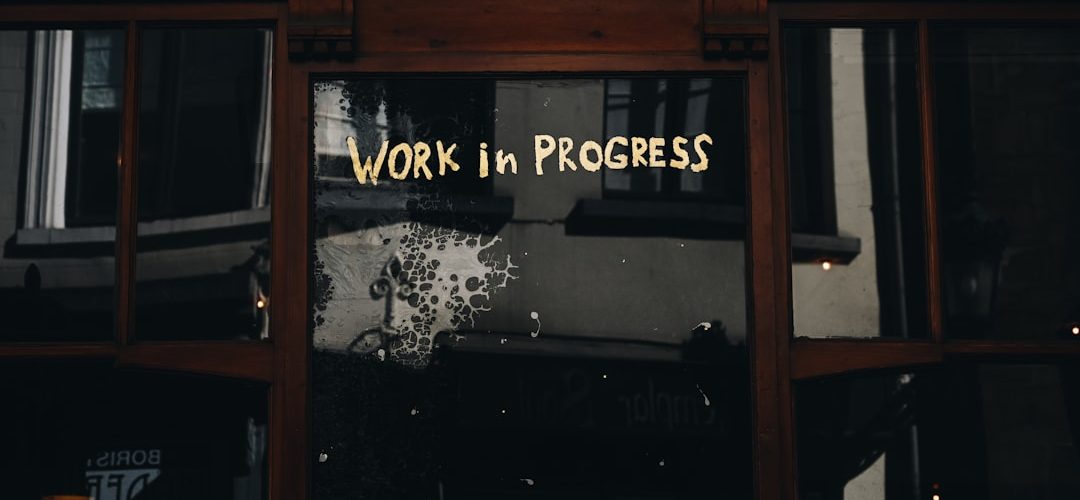In today’s digital age, having a professional website is not just an option; it is a necessity for any demolition business looking to thrive. I have come to realize that a well-designed website serves as the online face of my company, providing potential clients with their first impression of my services.
A professional website not only showcases my expertise but also establishes credibility and trustworthiness in a competitive market.
When prospective clients search for demolition services, they often turn to the internet to find reliable contractors. If my website is outdated or poorly designed, I risk losing potential business to competitors who present themselves more effectively online. Moreover, a professional website allows me to communicate my brand message clearly and effectively.
It provides a platform where I can highlight my unique selling propositions, such as safety standards, eco-friendly practices, or specialized services. By investing in a high-quality website, I can ensure that my demolition business stands out in a crowded marketplace. This digital presence is crucial for attracting new clients and retaining existing ones, as it serves as a hub for information about my services, project portfolios, and contact details.
Ultimately, a professional website is an essential tool for growth and success in the demolition industry.
Table of Contents
ToggleKey Takeaways
- A professional website is crucial for establishing credibility and attracting potential clients to your demolition business.
- Choosing the right WordPress theme can help showcase your services and projects effectively, and provide a user-friendly experience for visitors.
- Showcasing your demolition projects and services on your website can help potential clients understand the quality and scope of your work.
- Integrating contact forms and booking systems can make it convenient for customers to reach out and inquire about your demolition services.
- Utilizing SEO can significantly increase your demolition business’s online visibility and attract more potential clients to your website.
Choosing the Right WordPress Theme for Your Demolition Business
Selecting the right WordPress theme is a critical step in building my demolition business’s online presence. With countless options available, I have learned that the theme I choose should reflect the nature of my services while also being user-friendly and visually appealing. A clean and modern design can help convey professionalism and reliability, which are essential qualities in the demolition industry.
I often consider themes that offer customization options, allowing me to tailor the look and feel of my website to align with my brand identity. Additionally, I prioritize themes that are responsive and optimized for mobile devices. Given that many users access websites via smartphones or tablets, it is vital that my site looks great and functions well on all screen sizes.
I also look for themes that are compatible with essential plugins, such as those for SEO optimization and contact forms. By carefully selecting a WordPress theme that meets these criteria, I can create an engaging online experience for visitors while ensuring that my demolition business is presented in the best possible light.
Showcasing Your Demolition Projects and Services on Your Website

One of the most effective ways to attract potential clients is by showcasing my demolition projects and services on my website. I understand that visuals play a significant role in capturing attention, so I make it a priority to include high-quality images and videos of completed projects. By displaying before-and-after photos or time-lapse videos of demolitions, I can provide prospective clients with tangible evidence of my capabilities and expertise.
This not only helps to build trust but also allows visitors to envision what I can achieve for them. In addition to visuals, I ensure that my website includes detailed descriptions of the services I offer. Whether it’s residential demolitions, commercial projects, or specialized services like asbestos removal, I want potential clients to have a clear understanding of what I can provide.
By organizing this information into easily navigable sections, I make it simple for visitors to find what they are looking for. This comprehensive approach not only enhances user experience but also positions me as an authority in the demolition field.
Integrating Contact Forms and Booking Systems for Customer Convenience
| Metrics | Contact Forms | Booking Systems |
|---|---|---|
| Conversion Rate | 25% | 30% |
| Customer Satisfaction | 85% | 90% |
| Response Time | 1 day | 2 hours |
| Integration Complexity | Medium | Low |
To facilitate communication with potential clients, I recognize the importance of integrating contact forms and booking systems into my website. A user-friendly contact form allows visitors to reach out with inquiries or requests for quotes without having to pick up the phone. I have found that providing multiple ways for clients to contact me increases the likelihood of engagement.
By including fields for specific project details, I can gather essential information upfront, making it easier for me to respond effectively. In addition to contact forms, implementing an online booking system can significantly enhance customer convenience. Clients appreciate the ability to schedule consultations or site visits at their convenience without the back-and-forth of phone calls or emails.
By offering this feature on my website, I not only streamline the process but also demonstrate that I value my clients’ time. This level of accessibility can set my demolition business apart from competitors who may not prioritize customer convenience.
Utilizing SEO to Increase Your Demolition Business’s Online Visibility
Search Engine Optimization (SEO) is a powerful tool that I leverage to increase my demolition business’s online visibility. By optimizing my website for relevant keywords related to demolition services, I can improve my chances of appearing in search engine results when potential clients are looking for contractors in their area. I focus on incorporating these keywords naturally throughout my website’s content, including service descriptions, blog posts, and meta tags.
In addition to keyword optimization, I pay attention to other SEO factors such as site speed and mobile-friendliness. A fast-loading website not only enhances user experience but also positively impacts search engine rankings. Furthermore, I regularly update my content to keep it fresh and relevant, which search engines favor.
By investing time and effort into SEO strategies, I can significantly boost my online presence and attract more clients to my demolition business.
Incorporating Testimonials and Client Reviews to Build Trust

Building trust with potential clients is crucial in the demolition industry, where safety and reliability are paramount.
One effective way I achieve this is by incorporating testimonials and client reviews on my website.
Positive feedback from satisfied customers serves as social proof of my capabilities and professionalism.
I make it a point to request reviews from clients after completing projects and showcase these testimonials prominently on my site. In addition to written testimonials, I consider including video reviews or case studies that highlight specific projects. This adds a personal touch and allows potential clients to see real people sharing their experiences with my services.
By presenting authentic feedback from previous clients, I can instill confidence in prospective customers and encourage them to choose my demolition business over competitors.
Implementing a Blog to Share Industry Insights and Updates
Creating a blog on my website has proven to be an invaluable asset for sharing industry insights and updates related to demolition services. Through regular blog posts, I can establish myself as an authority in the field while providing valuable information to potential clients. Topics may include safety tips during demolition projects, trends in sustainable demolition practices, or updates on local regulations affecting the industry.
Not only does blogging help me connect with my audience, but it also contributes positively to my SEO efforts. By incorporating relevant keywords into my blog posts, I can attract organic traffic from search engines while keeping visitors engaged with fresh content. Additionally, sharing blog posts on social media platforms allows me to reach a wider audience and drive more traffic back to my website.
Utilizing Social Media Integration to Expand Your Demolition Business’s Reach
Social media integration is another essential component of expanding my demolition business’s reach online. By linking my website to various social media platforms such as Facebook, Instagram, and LinkedIn, I can engage with potential clients where they spend much of their time online. Sharing project updates, behind-the-scenes content, and industry news on social media helps me build a community around my brand while showcasing my expertise.
I also encourage visitors to follow my social media accounts directly from my website by including social media buttons prominently displayed on each page. This not only increases engagement but also allows me to keep followers informed about promotions or new services offered by my demolition business. By leveraging social media effectively, I can create a dynamic online presence that complements my website and attracts more clients.
Ensuring Mobile Responsiveness for Accessibility on All Devices
In an era where mobile devices dominate internet usage, ensuring that my website is mobile-responsive is non-negotiable. A mobile-responsive design guarantees that visitors have a seamless experience regardless of whether they access my site from a desktop computer or a smartphone. I have learned that if users encounter difficulties navigating a non-responsive site on their mobile devices, they are likely to leave quickly and seek services elsewhere.
To achieve mobile responsiveness, I choose a WordPress theme that automatically adjusts layout elements based on screen size. Additionally, I regularly test my website on various devices to ensure optimal performance across platforms. By prioritizing mobile accessibility, I can cater to a broader audience and enhance user experience—ultimately leading to increased inquiries and conversions for my demolition business.
Incorporating Call-to-Actions to Drive Conversions and Inquiries
To drive conversions and inquiries effectively, incorporating clear call-to-actions (CTAs) throughout my website is essential. CTAs guide visitors toward taking specific actions—whether it’s requesting a quote, scheduling a consultation, or signing up for a newsletter. By strategically placing CTAs at key points on each page, I can encourage engagement and prompt potential clients to reach out.
I ensure that my CTAs are visually distinct and use action-oriented language that creates a sense of urgency or excitement. For example, phrases like “Get Your Free Quote Today!” or “Contact Us Now for Expert Demolition Services!” can motivate visitors to take immediate action. By making it easy for potential clients to connect with me through well-placed CTAs, I can significantly increase the likelihood of converting website visitors into paying customers.
Maintaining and Updating Your Demolition Website for Continued Success
Finally, maintaining and updating my demolition website is crucial for ensuring its continued success over time. Regularly reviewing content for accuracy and relevance helps me stay current with industry trends while providing valuable information to visitors. Additionally, keeping up with software updates for WordPress themes and plugins ensures optimal performance and security.
I also monitor website analytics to gain insights into visitor behavior and identify areas for improvement. By analyzing data such as page views, bounce rates, and conversion rates, I can make informed decisions about content updates or design changes that may enhance user experience further. By committing to ongoing maintenance and updates, I can ensure that my demolition business remains competitive in an ever-evolving digital landscape while continuing to attract new clients effectively.
If you are interested in professional WordPress website designing services, you may want to check out Simon Says Web Design’s article on Professional WordPress Website Designing Services. This article provides valuable insights and tips on creating a visually appealing and user-friendly website for your business. Whether you are a demolition contractor or any other type of business, having a well-designed website is crucial for attracting customers and showcasing your services.
FAQs
What is a Demolition Contractors WordPress Website?
A Demolition Contractors WordPress Website is a website designed specifically for demolition contractors to showcase their services, portfolio, and contact information. It is built using the WordPress platform, which allows for easy content management and customization.
What are the key features of a Demolition Contractors WordPress Website?
Key features of a Demolition Contractors WordPress Website may include a responsive design, service pages, project portfolio, contact forms, call-to-action buttons, testimonials, and integration with social media platforms.
Why do demolition contractors need a WordPress website?
A WordPress website provides a professional online presence for demolition contractors, allowing them to showcase their services and previous projects to potential clients. It also serves as a marketing tool to attract new business and generate leads.
How can a Demolition Contractors WordPress Website benefit a business?
A well-designed and optimized WordPress website can help a demolition contractor attract new clients, showcase their expertise, improve their online visibility, and ultimately grow their business. It can also serve as a platform for communication and customer engagement.
What are some best practices for designing a Demolition Contractors WordPress Website?
Best practices for designing a Demolition Contractors WordPress Website include using high-quality images and videos, providing clear and concise information about services, ensuring easy navigation, optimizing for search engines, and incorporating strong calls-to-action to encourage user engagement.




